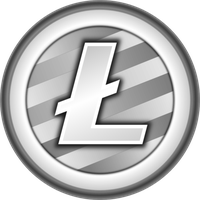Cryptocracy: A Litecoin Primer

Bitcoin is the original cryptocurrency, the first blockchain and the one with the highest value. While that certainly conveys a sense of supremacy, it also suggests that the monolithic coin was something of a prototype. No one can argue that Bitcoin isn’t a currency – it can be used in more places every day – but it also has some severe drawbacks. This is where Litecoin comes in. Litecoin was designed from the ground up to fix many of the issues inherent with Bitcoin and provide a more usable platform for day to day spending.

The Litecoin Foundation
Litecoin was originally created by a former Google employee, Charlie Lee, who extensively modified the source code for Bitcoin to produce a new cryptocurrency. Over time, as the project became both more successful and more complex, the foundation was formed to further the project’s goals. The foundation itself is a non-profit that financially supports the Core Development team.
More Blocks, More Transactions
Just like its parent-blockchain, Litecoin uses a Proof of Work system that encourages miners to work for the network. Unlike Bitcoin, Litecoin allows four times as many blocks to be solved in the same amount of time. This significant increase in activity allows Litecoin to process transactions at a much higher rate, while also generating a larger volume of coins. However, the blocks themselves are more difficult to computer due to a shift in algorithm generation. The higher required computational power helps offset the faster generation and maintain consistent value for the coin.
Lower Fees
As a result of the faster, more robust blockchain used within Litecoin, users can expect significantly lower transaction fees. As there is less of a premium on transactions within the network, there is more space for the necessary confirmations. Fees within the Litecoin blockchain are exponentially lower than those within Bitcoin, making it the coin of choice for savvy investors looking to transfer from fiat to exchanges.
So why Litecoin?
Litecoin prides itself on being a usable cryptocurrency. They’ve removed many of the roadblocks that Bitcoin is currently facing, including transaction traffic jams and ludicrously high price per unit. They have also recently announced their intentions to create a payment portal that will make Litecoin usable directly in the real world. The new “LitePay” system would allow users to access ATMs and pay with Litecoin anywhere that Visa is accepted, at a flat 1% fee.
But why not?
Litecoin itself is over 6 years old now, and other coins are beginning to rise to challenge it. Nano, recently rebranded from RaiBlocks, offers even faster transactions with a very aggressive adoption campaign. In the same way that Litecoin surpassed Bitcoin, it may in turn be surpassed by coins with newer technology and greater use cases. Litecoin is, after all, designed solely as a cryptocurrency in a world where investors are increasingly looking for coins and tokens that work within their own framework or product.
This is part of my ongoing series of basic primers for cryptocurrency. If you found it useful, interesting or just like my style - consider following me!
Previous primers;
A NEO Primer
An Ethereum Primer
Coins mentioned in post: